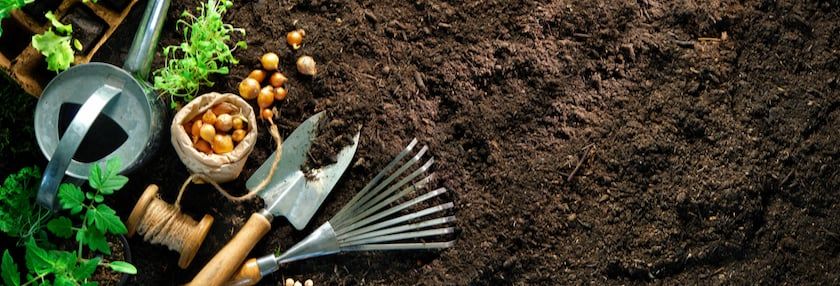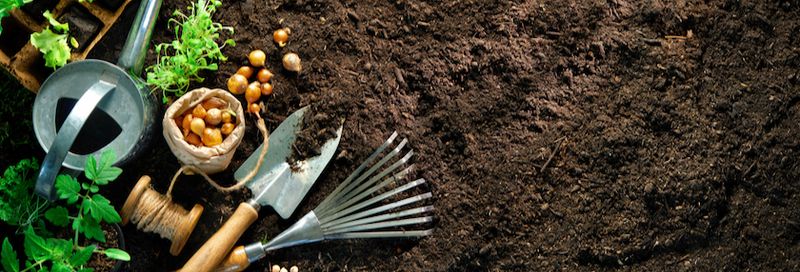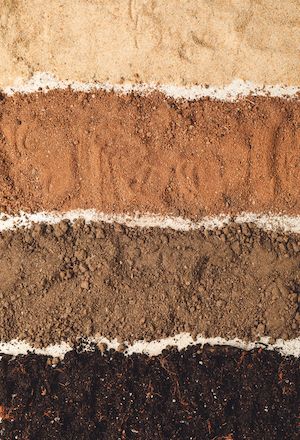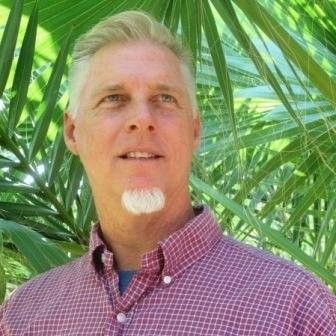Healthy Soil Yields Healthy Plants


Know your soil for better garden results this season
For plants, soil must have 3 main things: the ability to retain moisture, to be nutrient-rich and have proper aeration. If any of these 3 features are missing or out of balance plants can struggle. The good news is any type of soil can be properly amended to transform it into fine, friable, and productive garden soil. It just takes some time and the right recipe. Read along to discover the recipe you need to create organically rich and healthy garden soil.

Capacity matters
It is important to recognize that different soils have different capacities because of their particle sizes and shapes. Sandy soils have good drainage capacity, but low water and nutrient retention capacity, while Clay soils have poor drainage but have higher capacity for holding nutrients and water.
These two soil types have completely opposite capacities. Amending them with the same recipe would not make sense. To get a beneficial outcome for your plants, you must use the right amendment recipe for your soil type, just like you would adjust your recipe when preparing an Angel Food cake versus a Pound cake.
Organic amendments are rich with beneficial micro-organisms that help maintain proper soil pH and break down nutrients in the soil to make them more readily available to plant roots. Common organic amendments include peatmoss, composts, aged manures, wood ash, sawdust, grass clippings, or straw. Inorganic amendments include things like perlite, pea gravel, and sand.
Soil recipe rules
Yes, there are rules to follow.
Clay: Improvement of aeration and permeability are the most critical recipe rules. Long-lasting fibrous materials like peatmoss are best. Leaf composts can also work. Perlite is an acceptable inorganic amendment. However, never use sand or gravel with heavy clay soils, as these combine to form a cement-like composite (Adobe) that will lack oxygen, permeability, and nutrients. Good for a building material, but not for growing healthy plants.

Sand: Improvement of moisture retention and enhanced fertility are the recipe goal. Amend sand with decomposed, organically rich amendments like leaf compost, aged manures, or peat. A combination of faster decomposing organic materials can also be used, but they should be added in smaller amounts more frequently.
Silt: Improvement of either moisture retention or aeration may be needed for this recipe. Amend with fast decomposing amendments like grass clippings, aged manures, or mushroom compost. Amendment choices will depend on whether you are dealing with a clay-silt or sandy-silt. Follow recipes above.
Breaking new ground
Breaking new ground with these proper recipe rules will help create healthy, well-equipped planting beds for spring or fall.
When incorporating organic amendments, cover your planting area with 2 to 4 inches of the material and till or cultivate it in evenly. Allow about 4 to 6 weeks, for the proper decay of the amendments and for assimilation of the micro-organisms into the soil prior to planting. When augmenting soils with extremely heavy clay or poor nutritional value, additions of at least 4 to 6 inches of amendments is recommended.
Granulated or time-release fertilizers can also be applied during the fall or early spring bed prep. A complete, balanced 10-10-10 fertilizer at the rate of 2 to 3 lbs. per 100 sq. ft. can be broadcast and raked into the top few inches of soil after addition of the amendments. If you are an organic grower, a naturally derived, balanced fertilizer can be utilized at this same rate.

Once amendments are properly tilled and any fertilizer raked in, then water the bed thoroughly. Then, let it rest until you are ready to plant. Covering the planting area with black landscape fabric or plastic after prep can be helpful to reduce potential of weed seed germination.
Healthy moisture-holding, nutrient and oxygen rich soil is within every gardener’s grasp. This spring, grab a shovel, a rake and get to adding ample amounts of micro-organism rich organic material to your planting beds. Proper additions of amendments, once or twice per year is the simplest, most effective way to keep your soil prepared for the next planting season.
Like fine wine, your garden soil should only get better with time.
Tags:Garden & Landscape

Acreage Life is part of the Catalyst Communications Network publication family.














